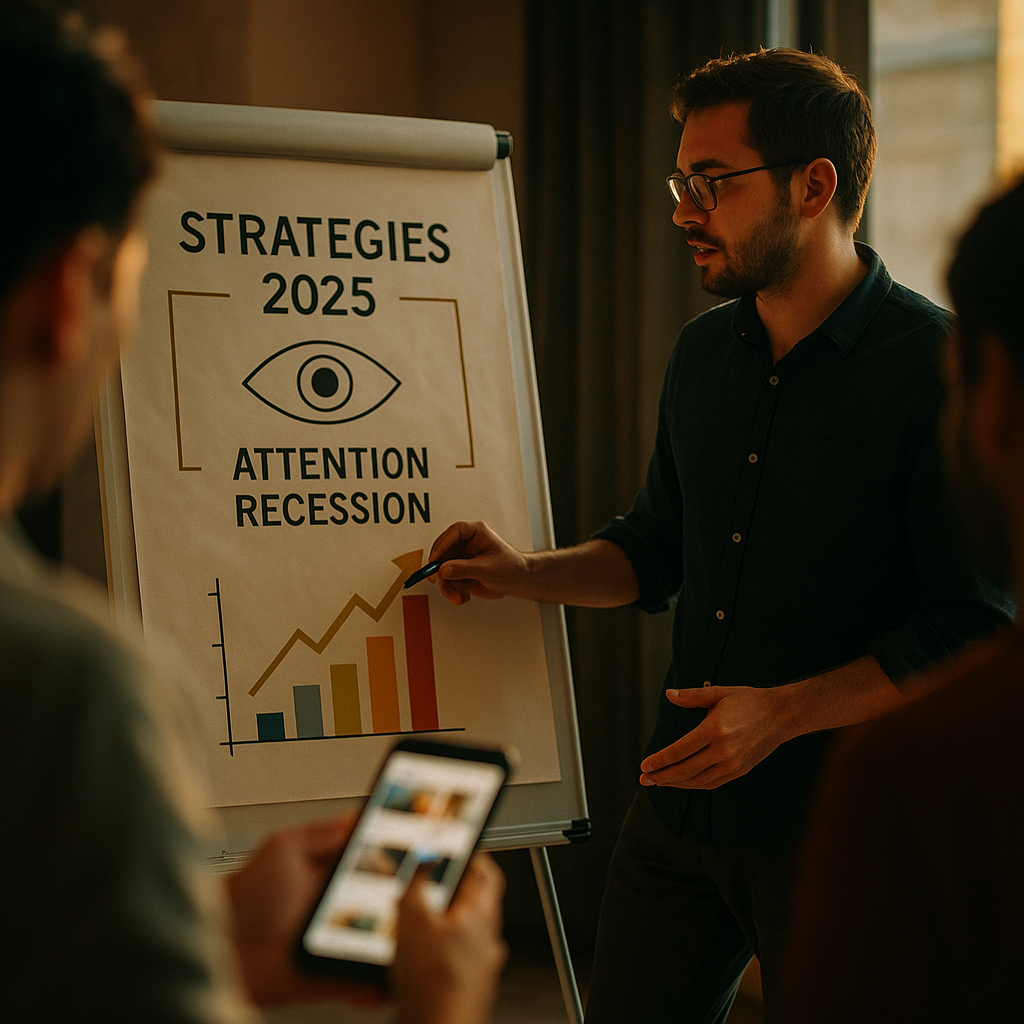The Attention Recession is redefining the digital landscape as brands and creators vie for increasingly elusive audience focus. In 2025, bombarded by endless content and notifications, users are harder than ever to engage. To stand out, businesses must demonstrate value and authenticity, not just flood channels with ads. Discover how to earn—not just buy—your audience’s attention in this new reality.
Why the Attention Recession Changed the Rules of Audience Focus
The digital world has entered what many experts call an Attention Recession—a period marked by diminishing returns from traditional advertising and content bombardment. According to a 2024 survey by GlobalWebIndex, 74% of users say they actively avoid online ads and skip content that doesn’t engage them within the first 8 seconds. This behavioral shift exposes the limitations of “attention-buying” tactics.
Instead of responding to sheer repetition, today’s audiences demand relevance and authenticity. This shift places new pressures on brands and creators to evolve from simply grabbing eyes to genuinely earning audience focus through meaningful, reciprocal exchanges.
Building Trust: The Foundation for Long-Term Audience Loyalty
Trust is now the currency of sustainable engagement. In the Attention Recession, an overabundance of low-value, click-bait content has made users more skeptical than ever. According to Edelman’s 2025 Trust Barometer, 68% of global consumers say that trust determines their loyalty to a brand.
- Transparent Communication: Honesty about products, sponsorships, and data use is non-negotiable.
- Consistent Value: Content that reliably solves problems or enriches lives keeps people coming back.
- Active Listening: Responding to feedback—rather than broadcasting messages—creates trust through two-way interaction.
Building trust is the first step toward earning—not renting—your audience’s focus.
Content That Earns Attention: Personalization and Relevance
In 2025, personalized, audience-centered content is crucial for capturing attention. Research by Statista shows that 83% of consumers are more likely to engage with brands offering tailored experiences. This means you can no longer afford to produce generic, one-size-fits-all messaging.
- Segmented Messaging: Use analytics to target segments with specific interests or pain points.
- Dynamic Content: Adapt content in real-time based on user behavior or preferences.
- Human Touch: Incorporate stories, user-generated content, or behind-the-scenes glimpses to connect emotionally.
By choosing relevance over reach, you show respect for your audience’s time—and, in turn, they reward you with genuine focus.
Experience Over Exposure: Shifting from Interruptions to Value
The classic interruption-based approach—pop-ups, auto-play videos—no longer works in the Attention Recession. Instead, forward-thinking brands invest in experiences that serve, educate, or delight.
- Interactive Formats: Quizzes, polls, and live streams invite participation and immersion.
- Educational Initiatives: Tutorials, guides, or webinars position you as a resource, not a distraction.
- Community Building: Forums or events foster conversation, loyalty, and a sense of belonging.
Well-crafted experiences outperform traditional exposure in both retention and conversion—because audiences choose to pay attention where they feel valued.
Measuring Earned Attention: Metrics That Matter Now
In a landscape where raw impressions are cheap, measuring true audience engagement becomes a strategic advantage. Here are the primary metrics that reflect earned—not bought—attention in 2025:
- Average Engagement Time: How long users interact with your content, not just scroll past it.
- Comments and Conversations: Two-way discussions, not just passive “likes.”
- Return Visits: Are people coming back for more, indicating long-term value?
- Share Rate: Content that people actively recommend to others earns organic reach.
- Conversion Quality: Actions (subscriptions, purchases) that reflect real trust, not just curiosity clicks.
Monitor and optimize these metrics to continuously earn stronger, more loyal audience focus.
The Role of Ethical AI in Earning Meaningful Engagement
The rapid adoption of AI tools in digital marketing has transformed personalization and content delivery. However, true audience focus is only earned if these technologies are deployed ethically. In 2025, regulatory bodies and consumer watchdogs have prioritized transparency and consent in digital engagement.
- Responsible Personalization: Use AI to predict user needs—but always give clear options to opt-in or out.
- Bias-Free Algorithms: Regularly audit AI for fairness and representation, especially in diverse markets.
- Explaining Recommendations: Whenever possible, tell users why they’re seeing certain content to build trust.
By leveraging AI with empathy and transparency, brands demonstrate respect for user autonomy—and, in turn, foster voluntary, sustained attention.
FAQs About The Attention Recession
- What is the Attention Recession?
The Attention Recession refers to the noticeable decline in consumers’ willingness to give focus to brands, content, or ads due to overstimulation and saturation in digital channels. It requires new strategies for earning—not just buying—audience attention. - How can businesses earn, instead of buy, audience attention?
Businesses can earn attention by providing trustworthy, personalized, and interactive experiences that demonstrate value and invite active participation—building a relationship rather than relying solely on paid exposure. - Why is trust crucial in the Attention Recession?
Trust acts as the foundation of long-term engagement. Consumers are more likely to focus on and remain loyal to brands they perceive as transparent, consistent, and genuinely responsive to their needs. - What are the most important engagement metrics in 2025?
Key metrics now include average engagement time, return visits, conversations, share rate, and conversion quality—each reflecting real, earned attention rather than simple impressions or passive reach. - How does ethical AI contribute to earning attention?
Ethical AI supports meaningful audience focus by personalizing experiences responsibly, ensuring transparency, and giving users control over their data and content recommendations.
In summary, the Attention Recession demands that brands and creators adapt by genuinely earning audience focus—through trust, relevance, ethical technology, and experiences that provide value. The lesson for 2025 is clear: those who respect and understand their audience will thrive in the new era of digital engagement.
